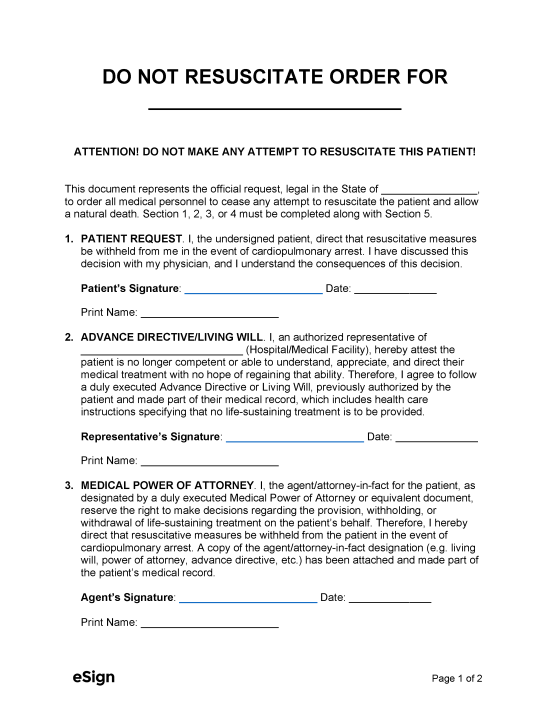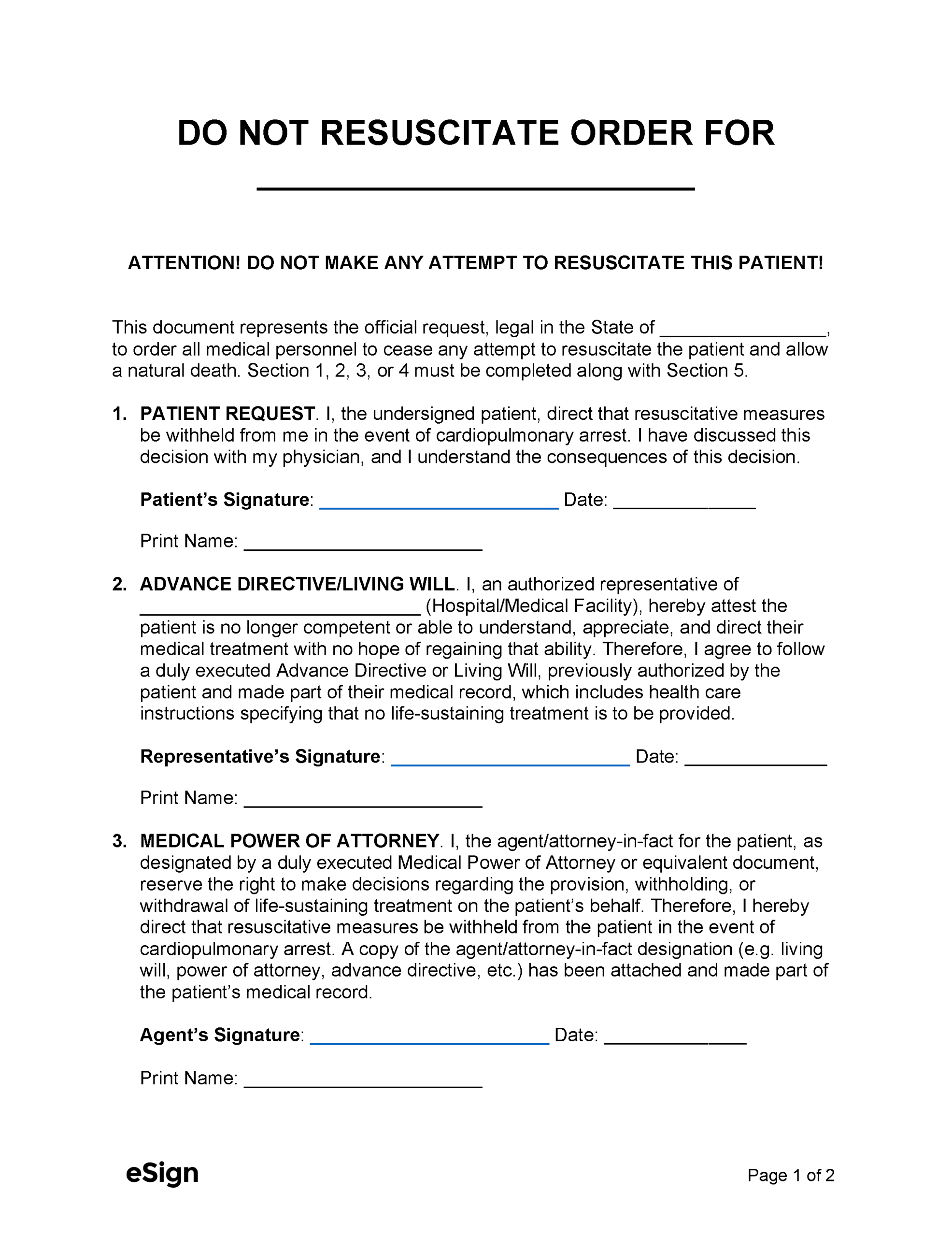By State
- Alabama
- Alaska
- Arizona
- Arkansas
- California
- Colorado
- Connecticut
- Delaware
- Florida
- Georgia
- Hawaii
- Idaho
- Illinois
- Indiana
- Iowa
- Kansas
- Kentucky
- Louisiana
- Maine
- Maryland
- Massachusetts
- Michigan
- Minnesota
- Mississippi
- Missouri
- Montana
- Nebraska
- Nevada
- New Hampshire
- New Jersey
- New Mexico
- New York
- North Carolina
- North Dakota
- Ohio
- Oklahoma
- Oregon
- Pennsylvania
- Rhode Island
- South Carolina
- South Dakota
- Tennessee
- Texas
- Utah
- Vermont
- Virginia
- Washington
- West Virginia
- Wisconsin
- Wyoming
How to Get a DNR Order
- Discuss With Physician – A physician has to sign off on a DNR order, so the patient and their doctor should discuss the consequences of a DNR before executing it.
- Complete and Sign State Form – Each state has a specific DNR form that is generally considered effective and valid within and outside of healthcare facilities. It is signed by a physician and the patient or their healthcare representative.
- Keep it Visible – The form (or an identifying bracelet if available in the patient’s state) should be kept near the patient and visible to medical staff so they know not to resuscitate the patient.
Does a DNR Order Require a Terminal Illness?
A patient does not typically have to be terminally ill to request a DNR order. However, some states suggest or recommend that a DNR be executed for patients diagnosed by their physician with a life-threatening disease or a condition that would render CPR useless.

